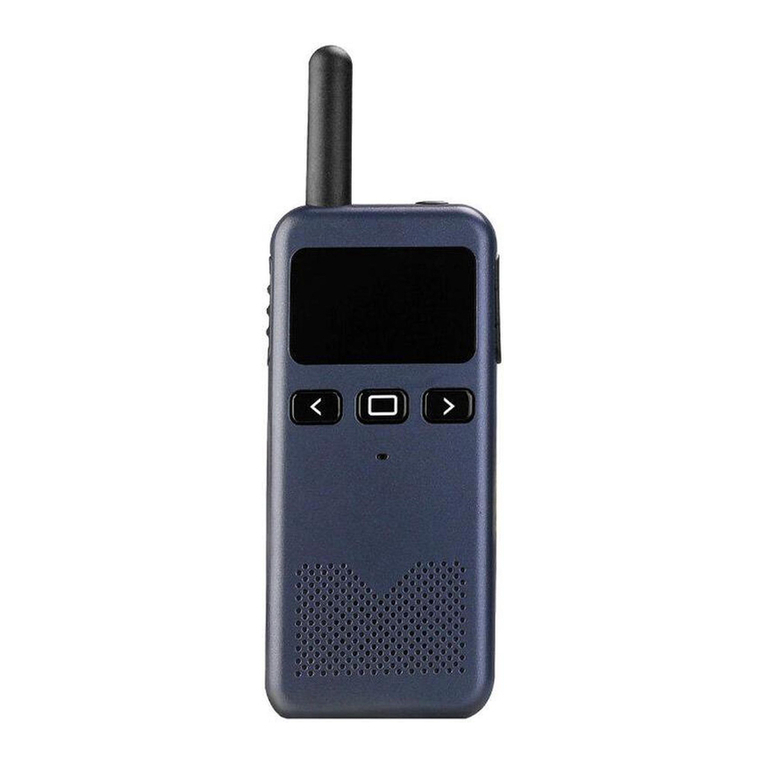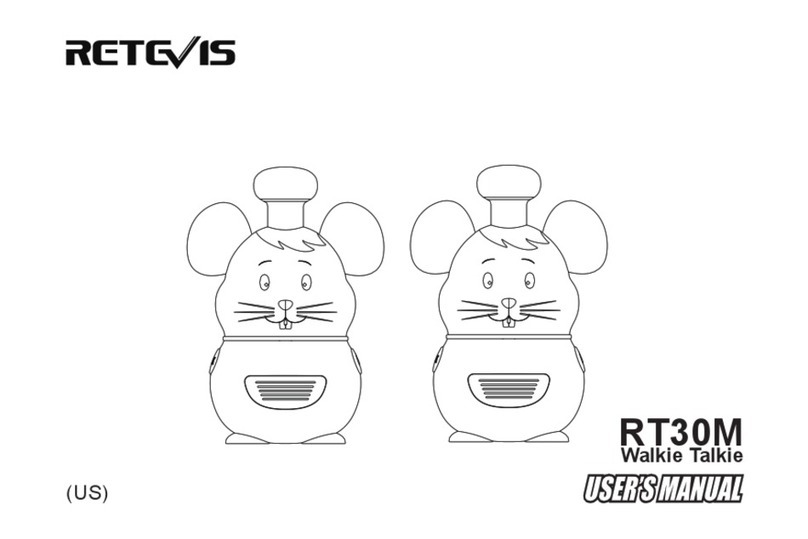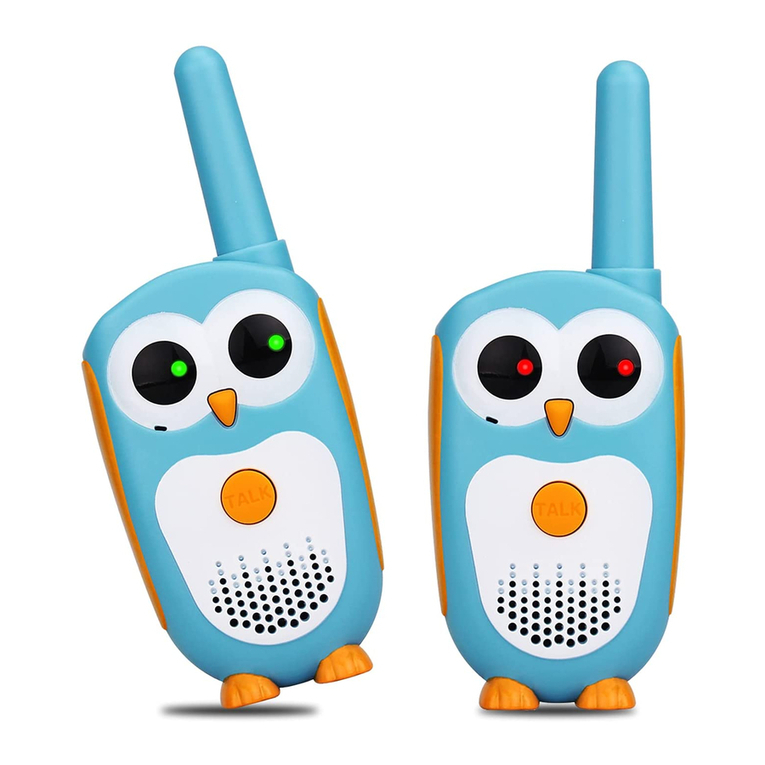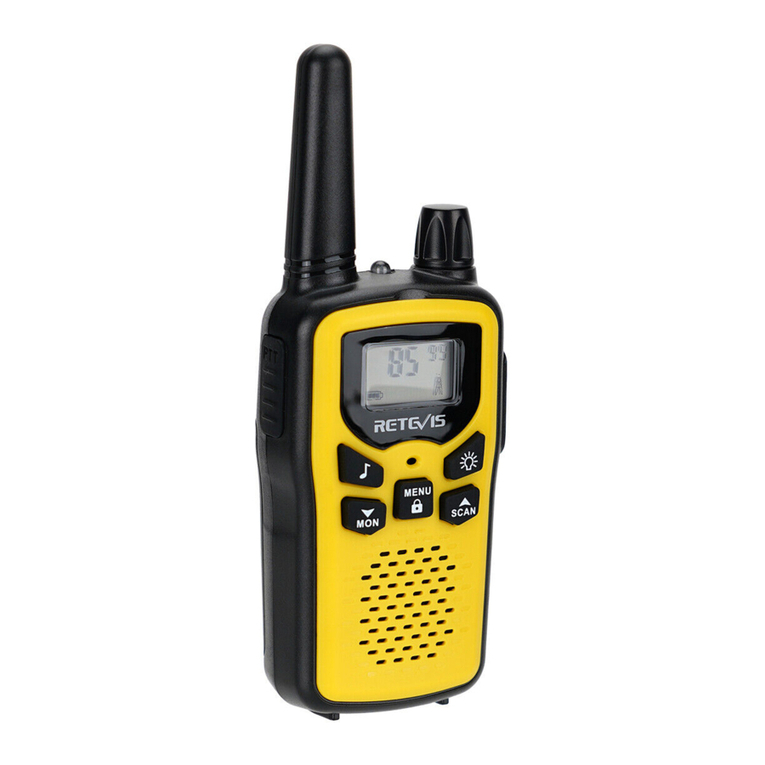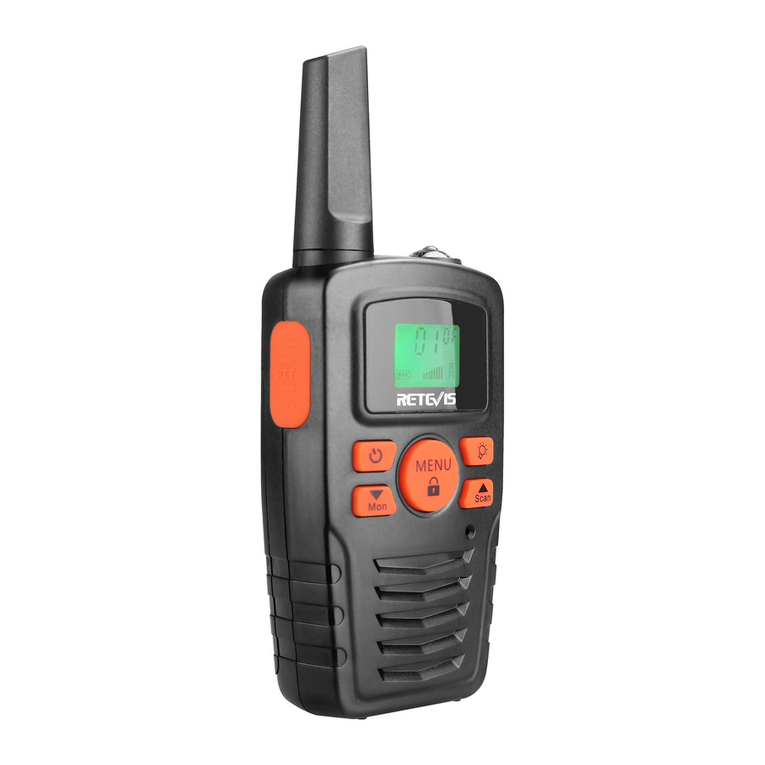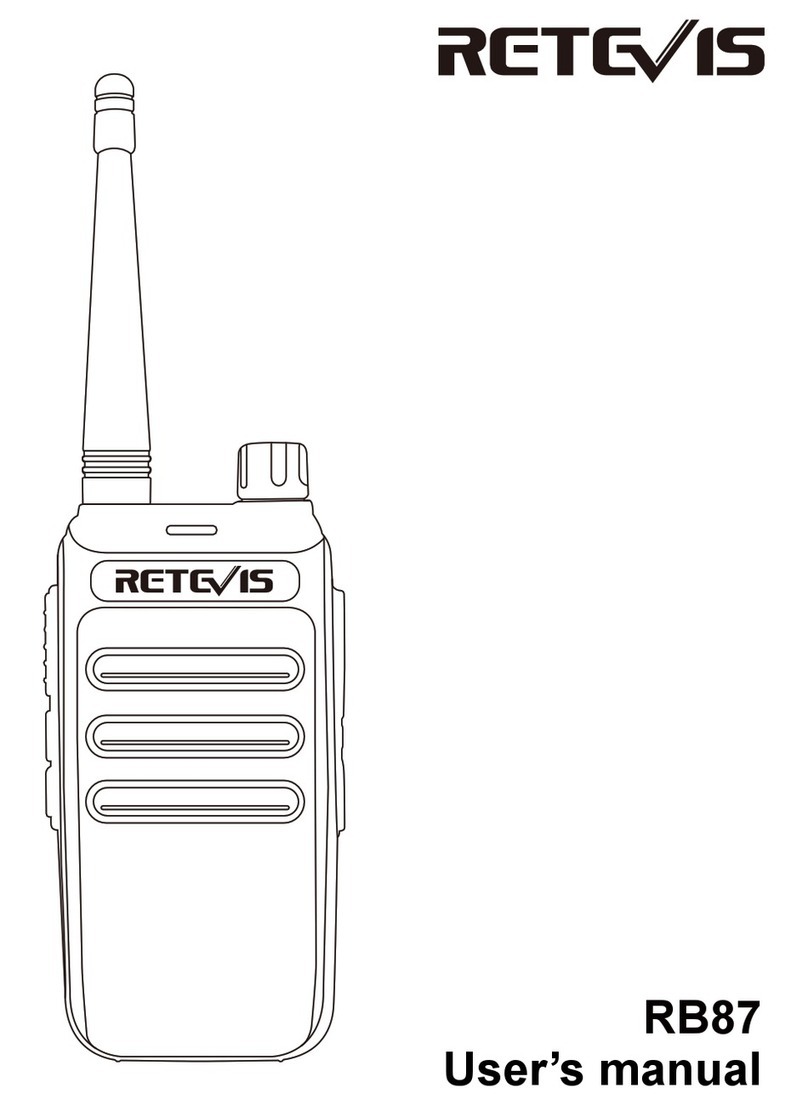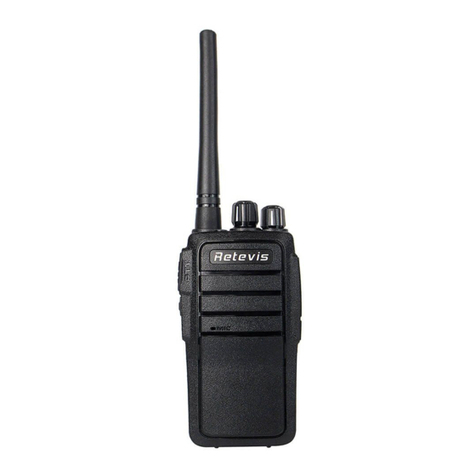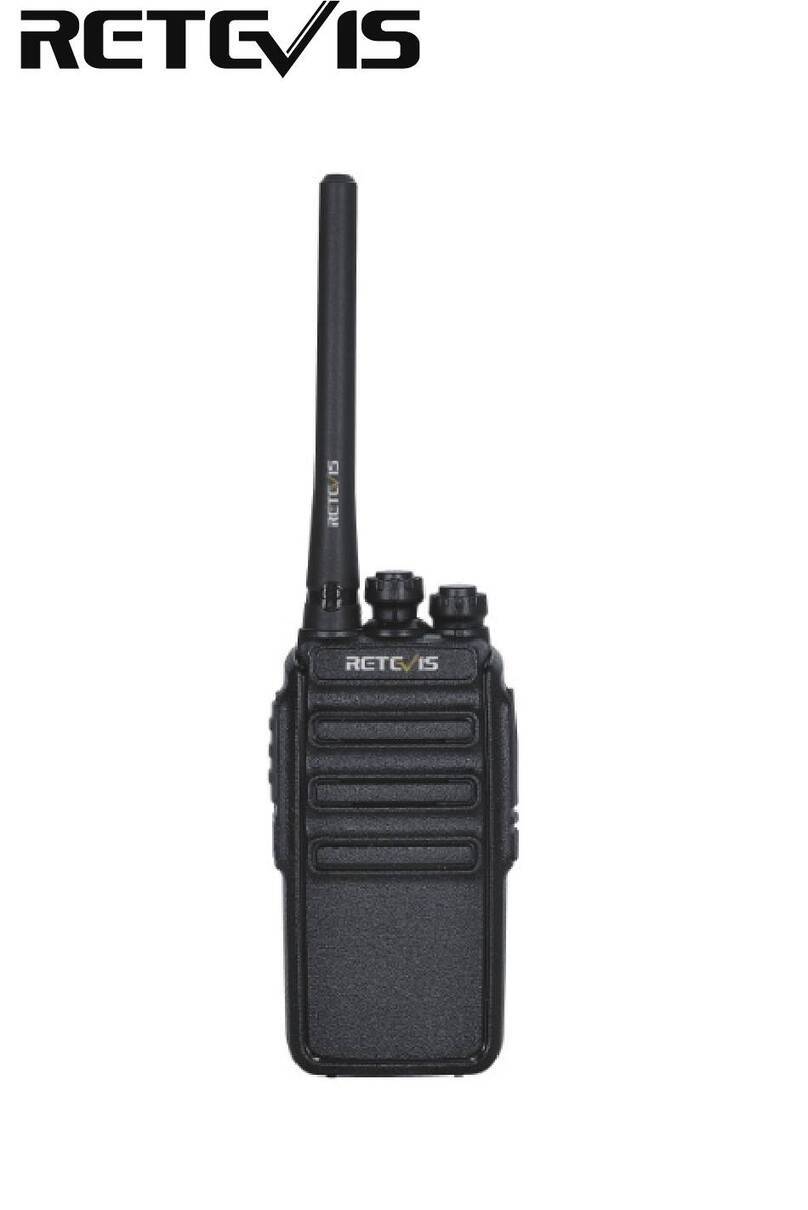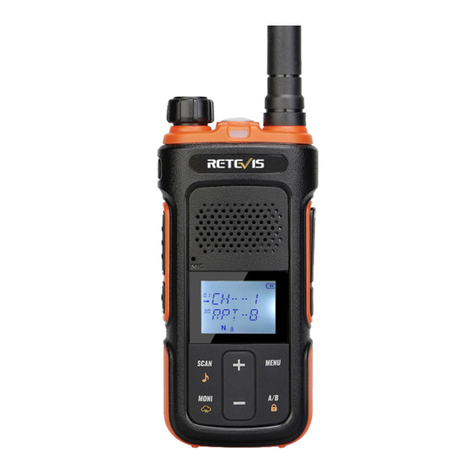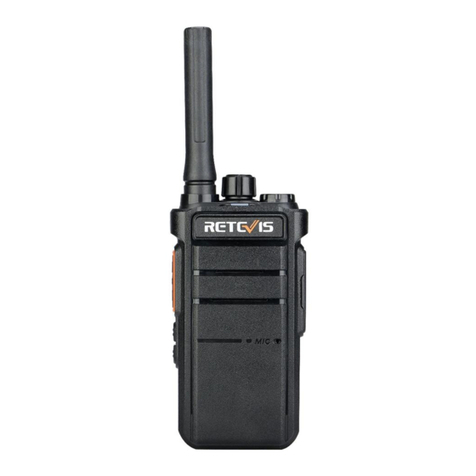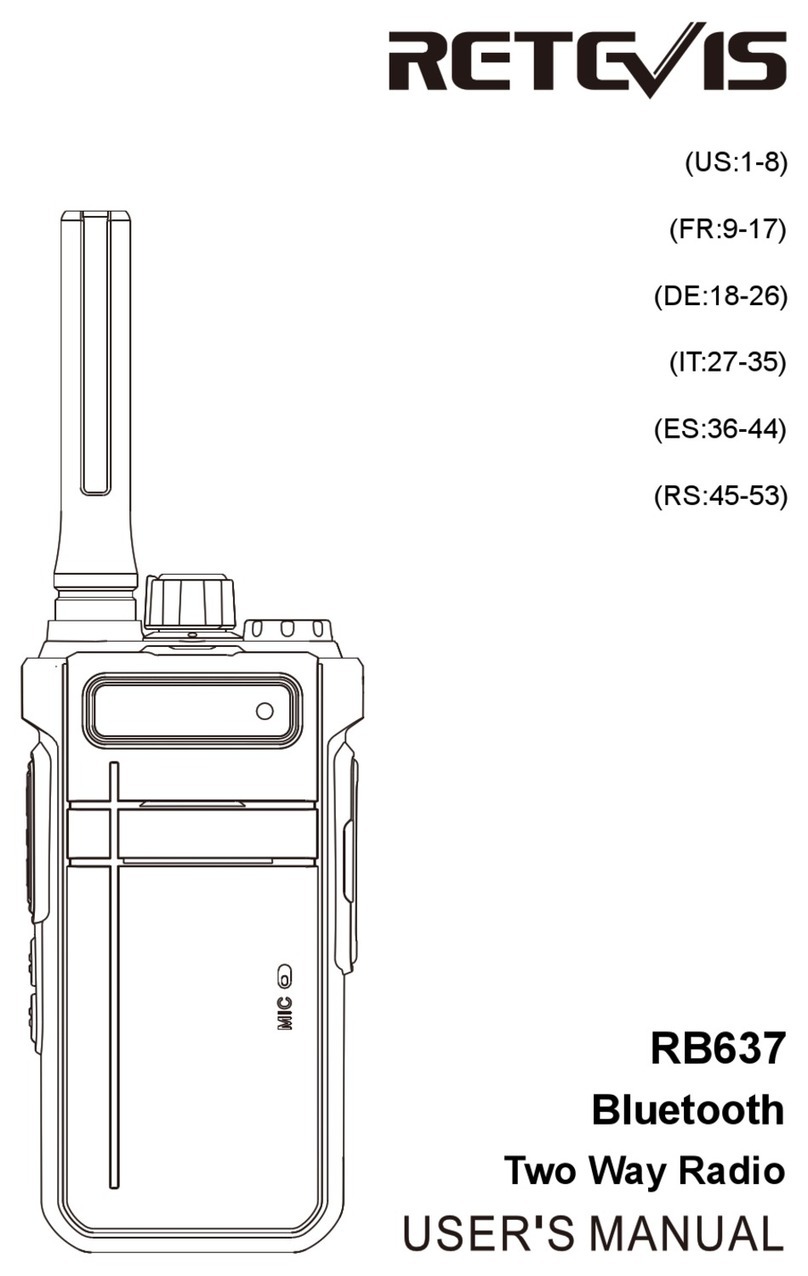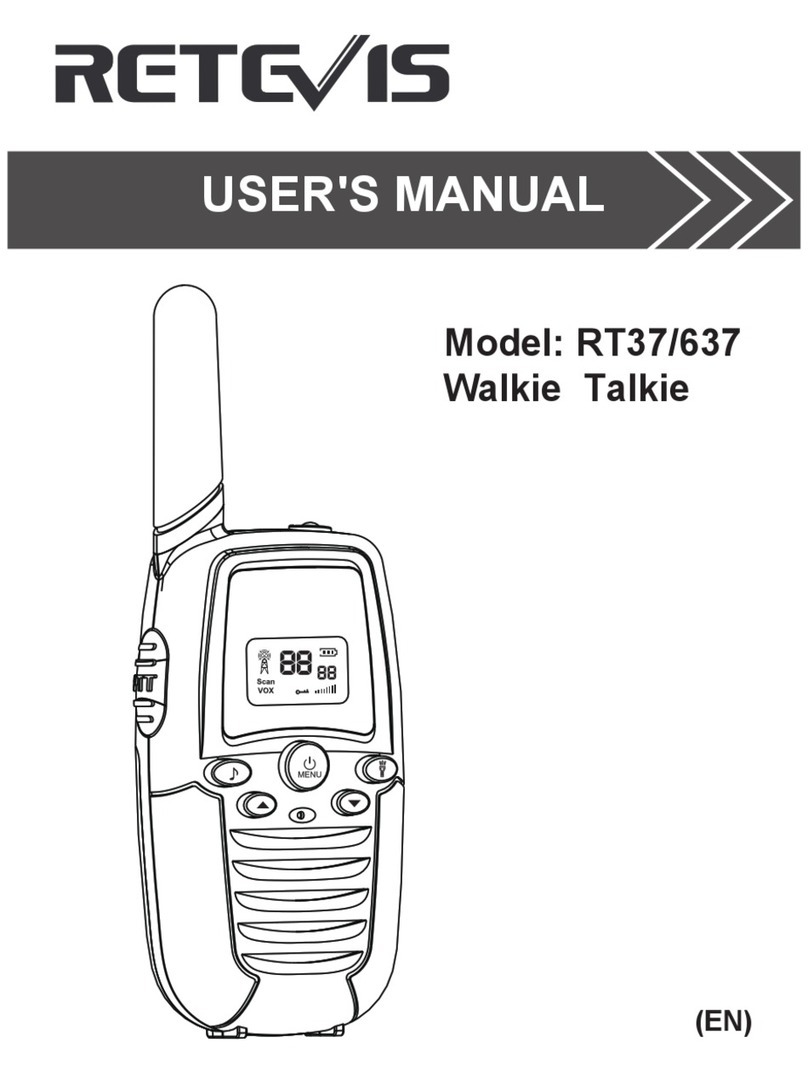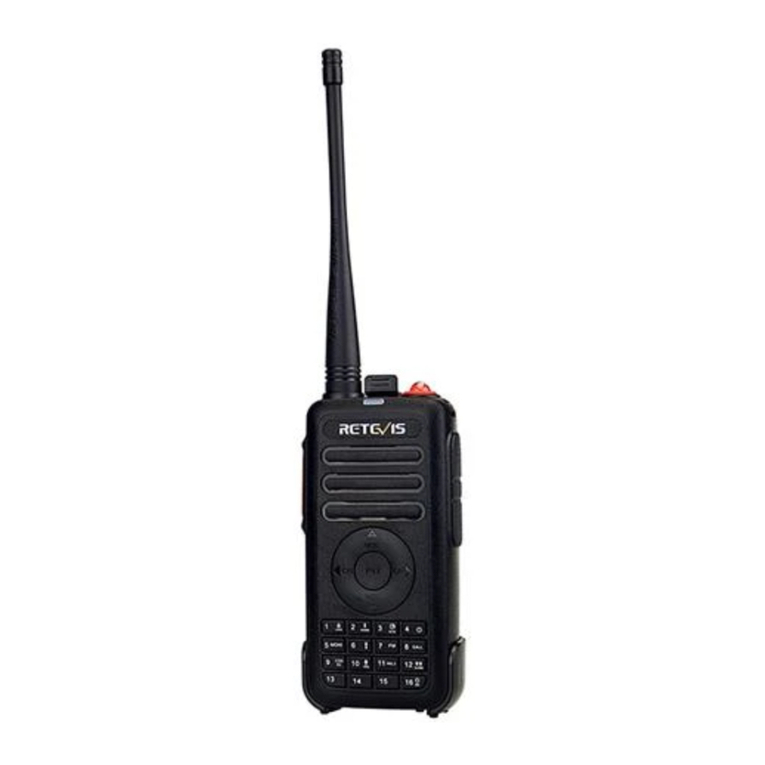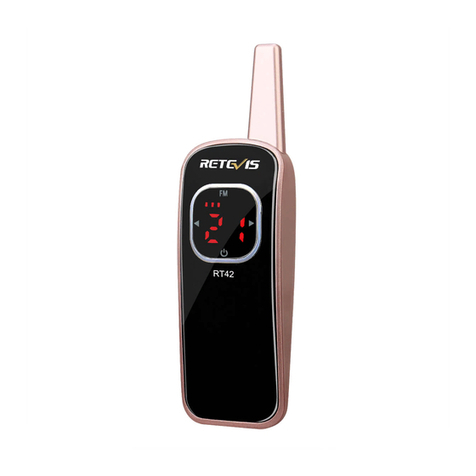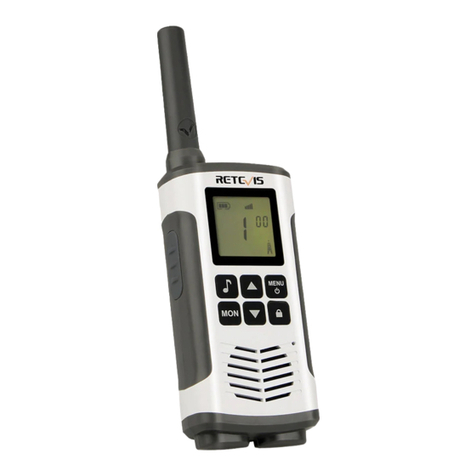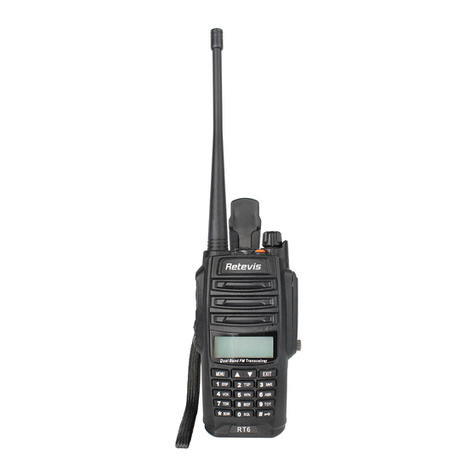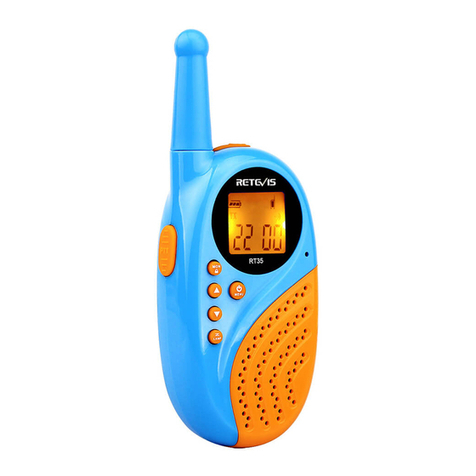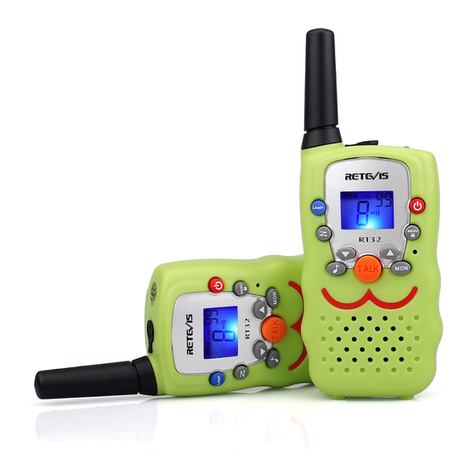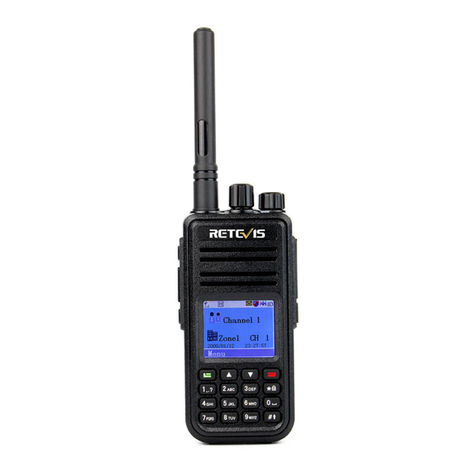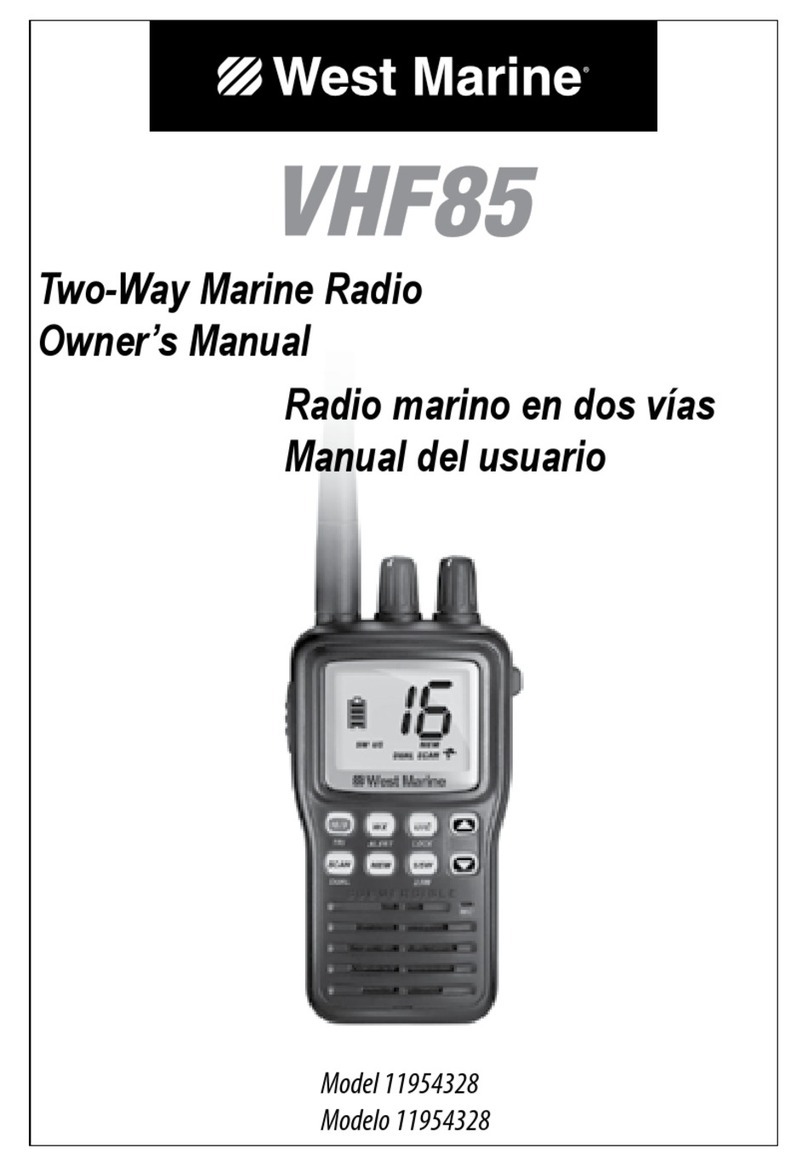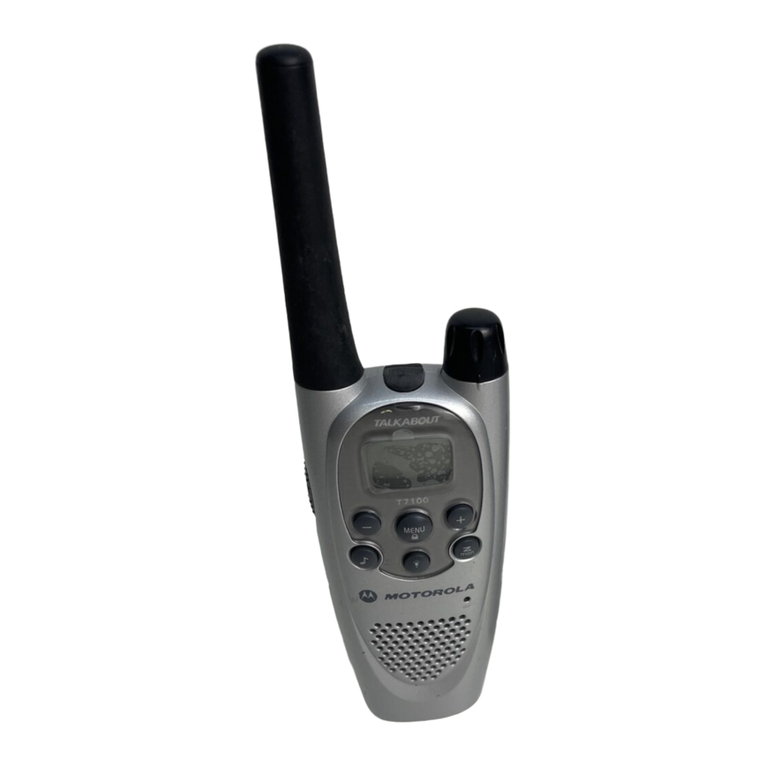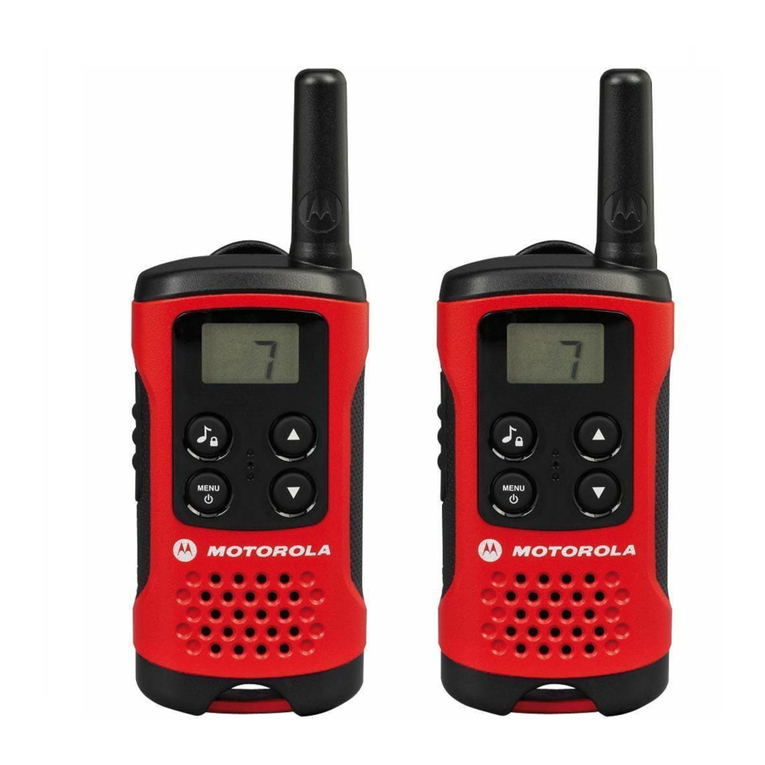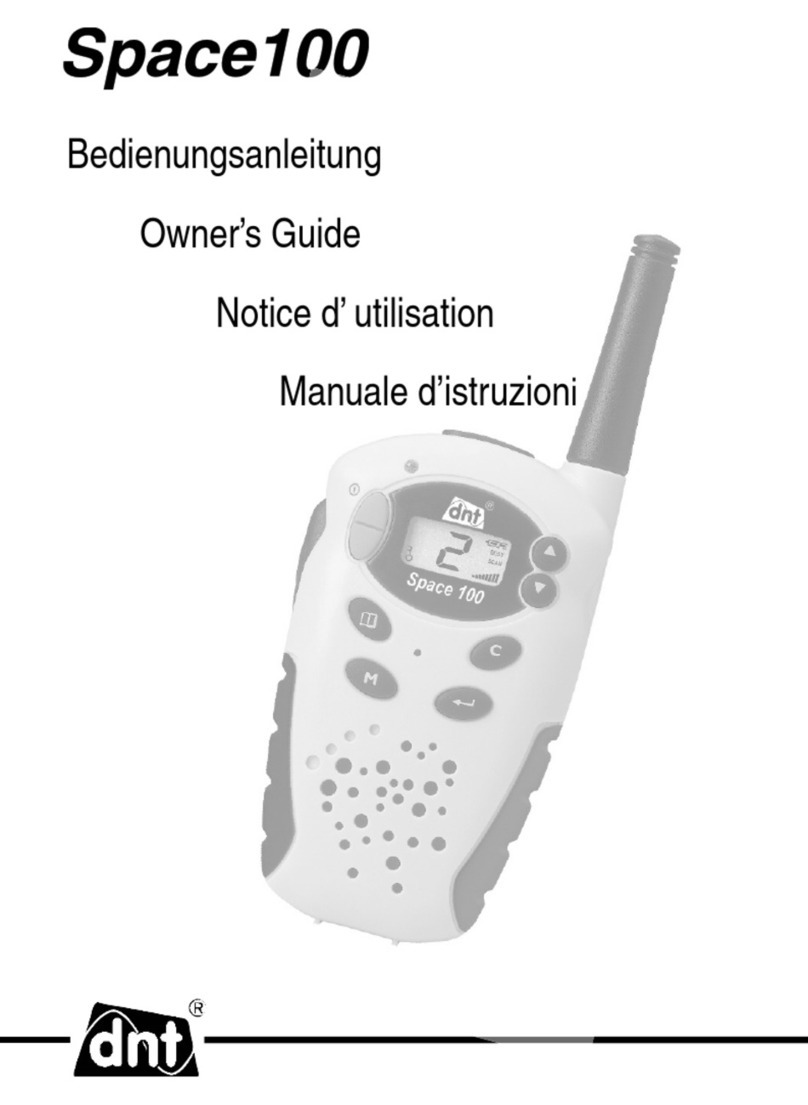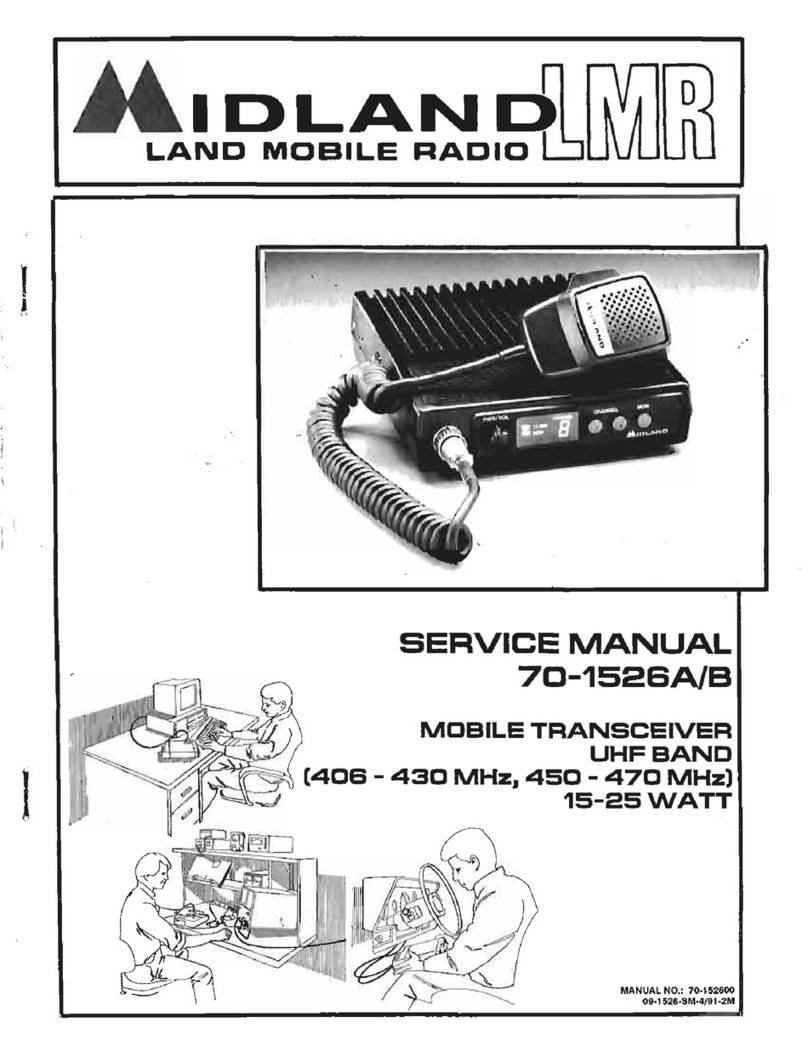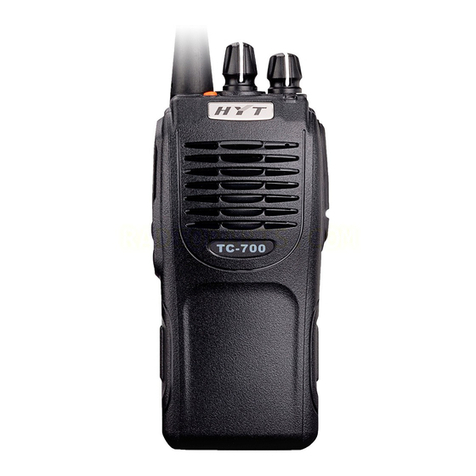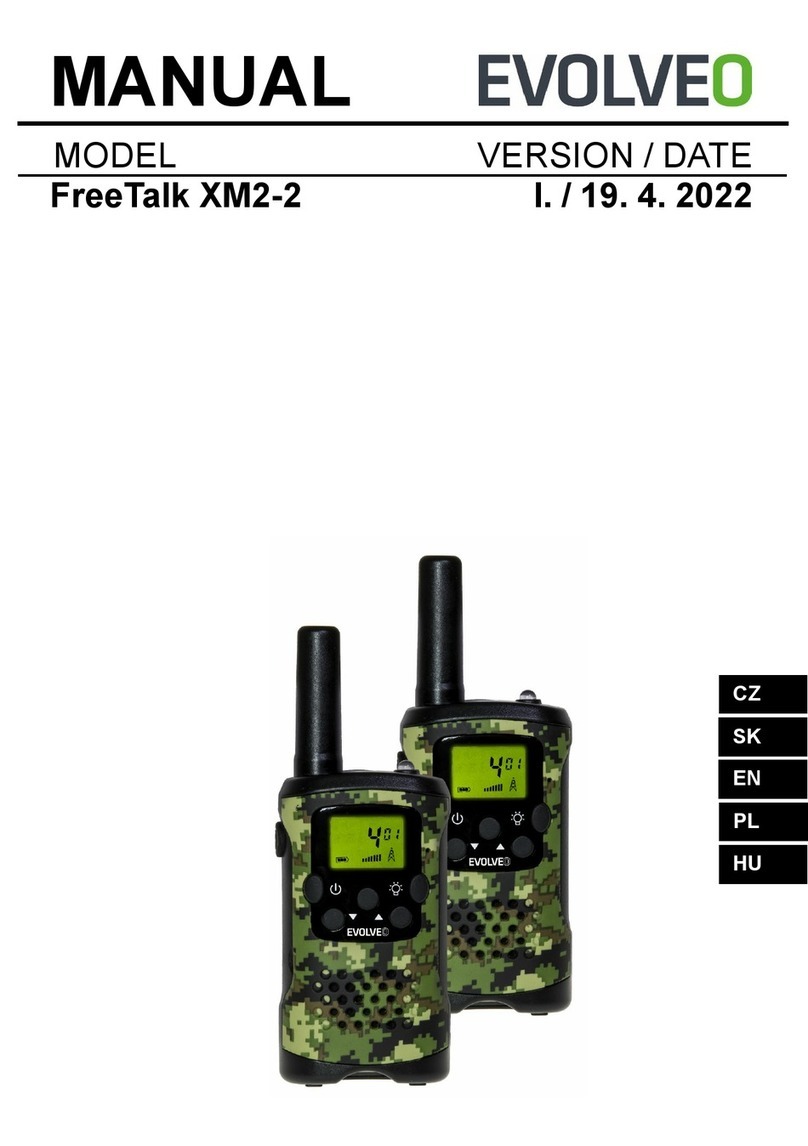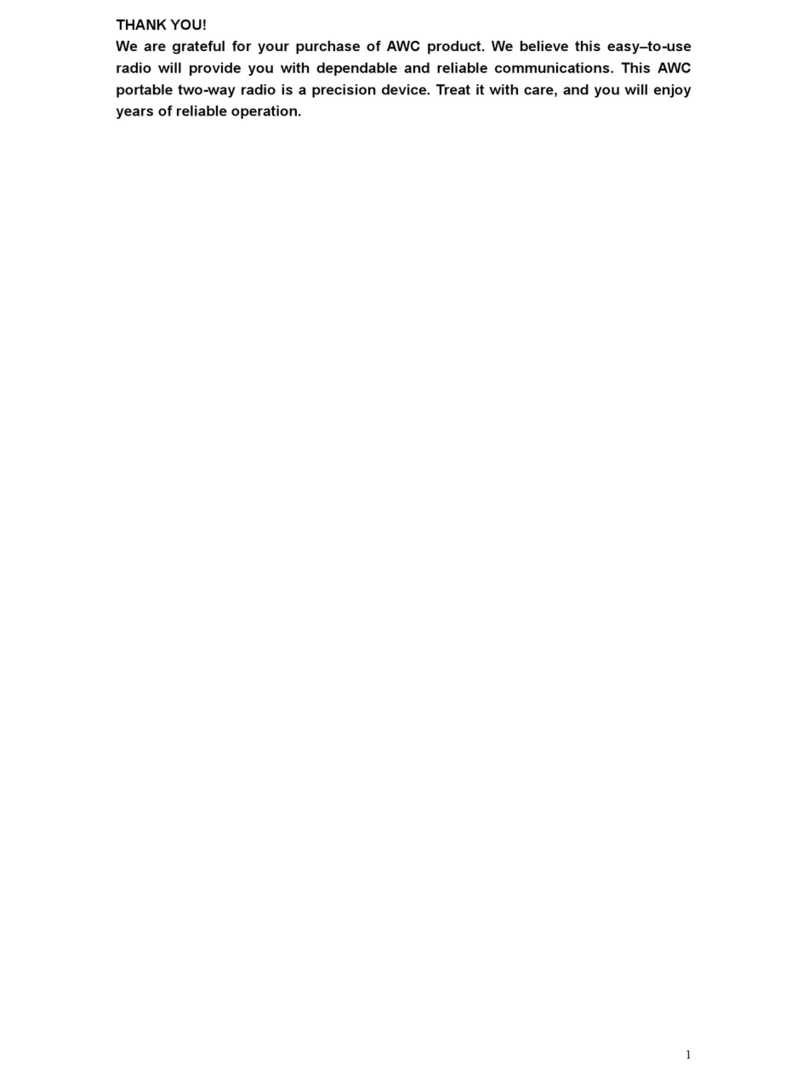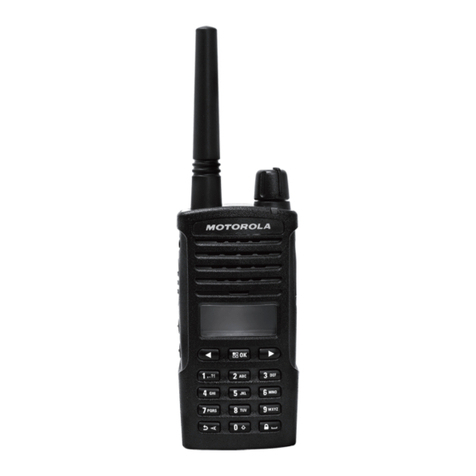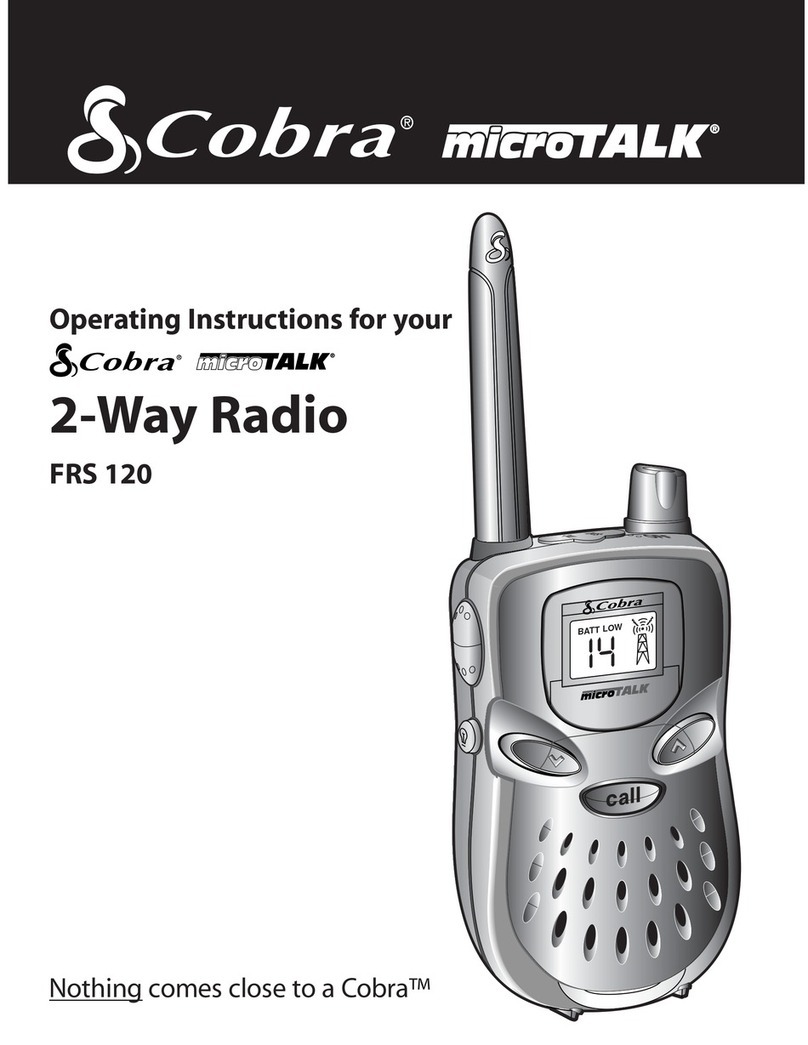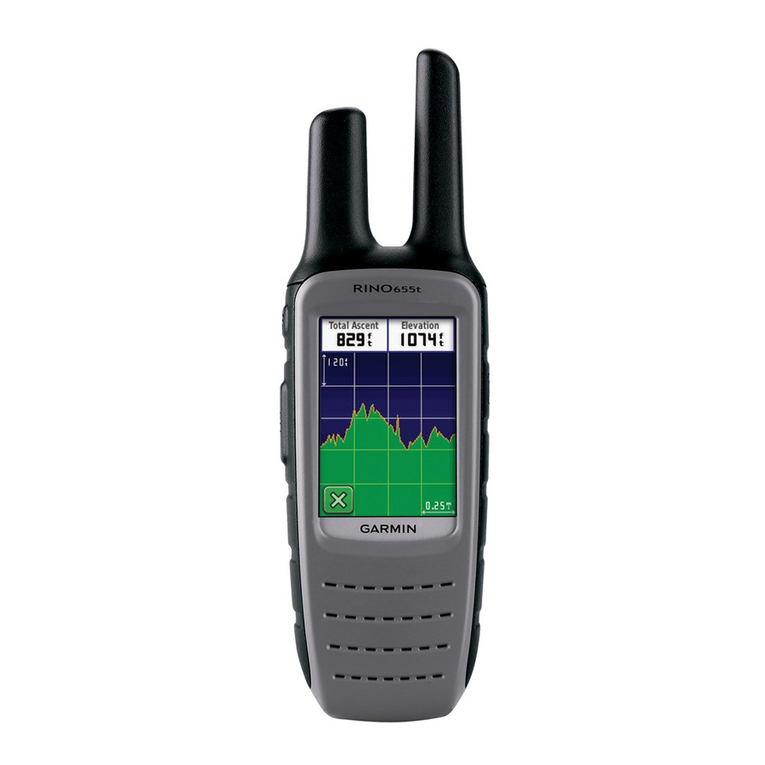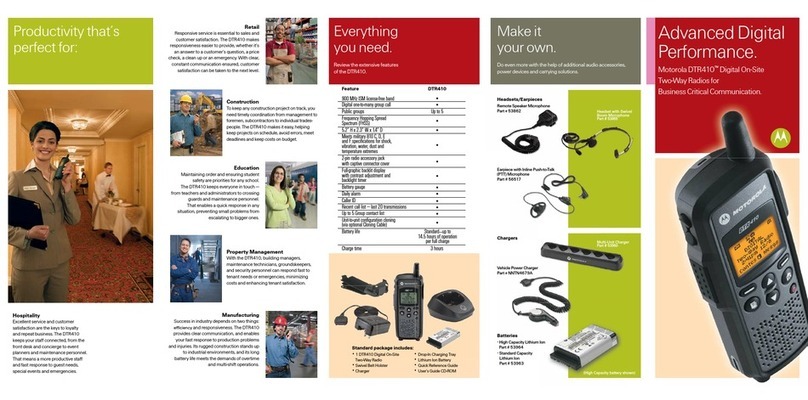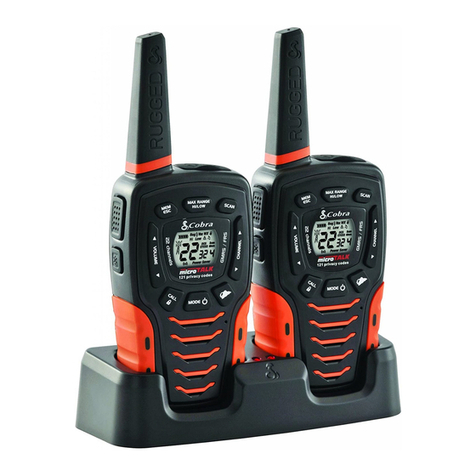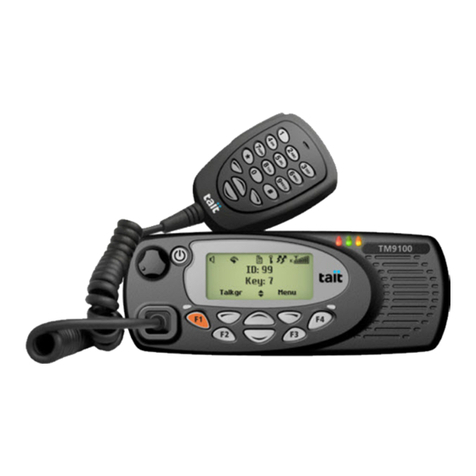
4. Receiving/Transmitting communications:
The devices are in ‘Reception’ mode when lit up, i.e. they are ready to
receive a call or sound transmitting on the activated frequency.
• When you press the Call tone button (12), the device switches
to ‘Transmission’ mode. You are then transmitting a sound signal
to the other device.
• To send a voice message, press the TALK button (15) and speak into the
microphone (10). Continue to press the button until you have finished
transmitting your message.
Hold the Mic with a minimum distance of 5 cm from your face.
Note:
- The other device must be set to the same channel and same
CTCSS code.
- When you finish the communication, please lose the hand, the
other device will email the beep to indicate that the this device is
ready to transmit.
5. Changing Channels
• Press the MENU button (11) once, the current channel number flashes on
the display.
• Press the ▲ button (4) or ▼ button (7) to change the channel .
• Press the TALK button to (15) confirm and return to stand-by.
Note: If no button is pressed within 15 seconds during setting, the unit will
return to standby .
6.CTCSS (Continuous Tone Coded Squelch System)
Licence free radio’s operating on the 400~470 MHZ frequency band, like
the Twintalker, have 8/20/22 available radio channels. If there are many
radio’s users in your neighborhood, there is a chance that some of these
users are operating on the same radio channel. To prevent that you receive
signals from other users, sub-channels have been integrated.
Two radios only be able to communicate with each other not only on the
same channel but also set to the same sub-channels.
The sub-channels:continuous tone squelch system(CTCSS)
When using CTCSS, a low frequency tone(67-250Hz)will be transmitted
along with the voice signal. There are 99 available tons to choose.
Note: To disable CTCSS, select code "0F” for CTCSS in the menu.
When pressing TALK button to confirm.
7.CTCSS
• Press the MENU-button (11) twice: The current CTCSS code flashes
5
